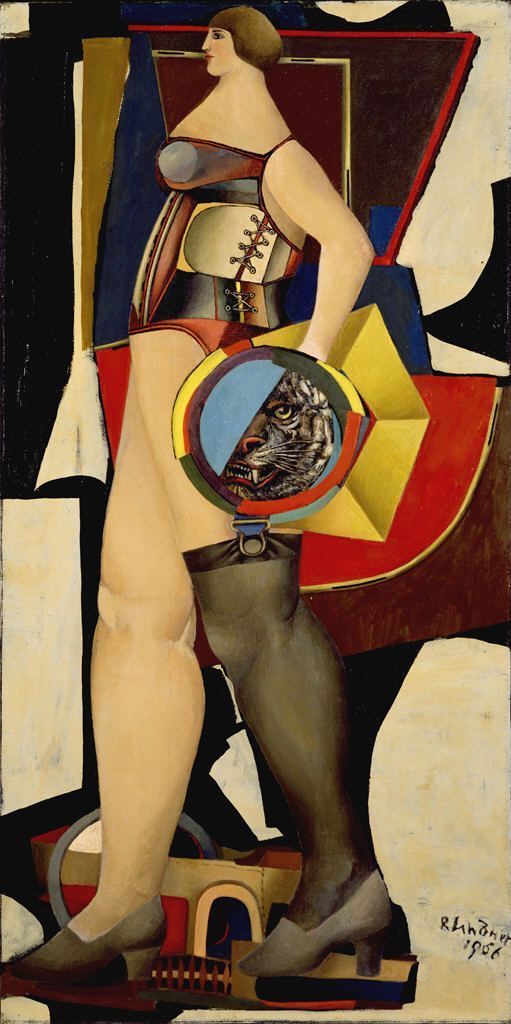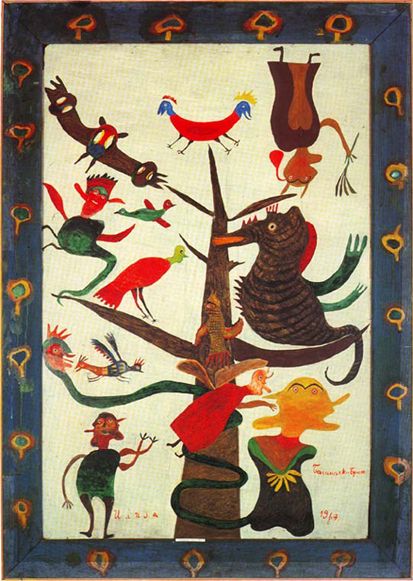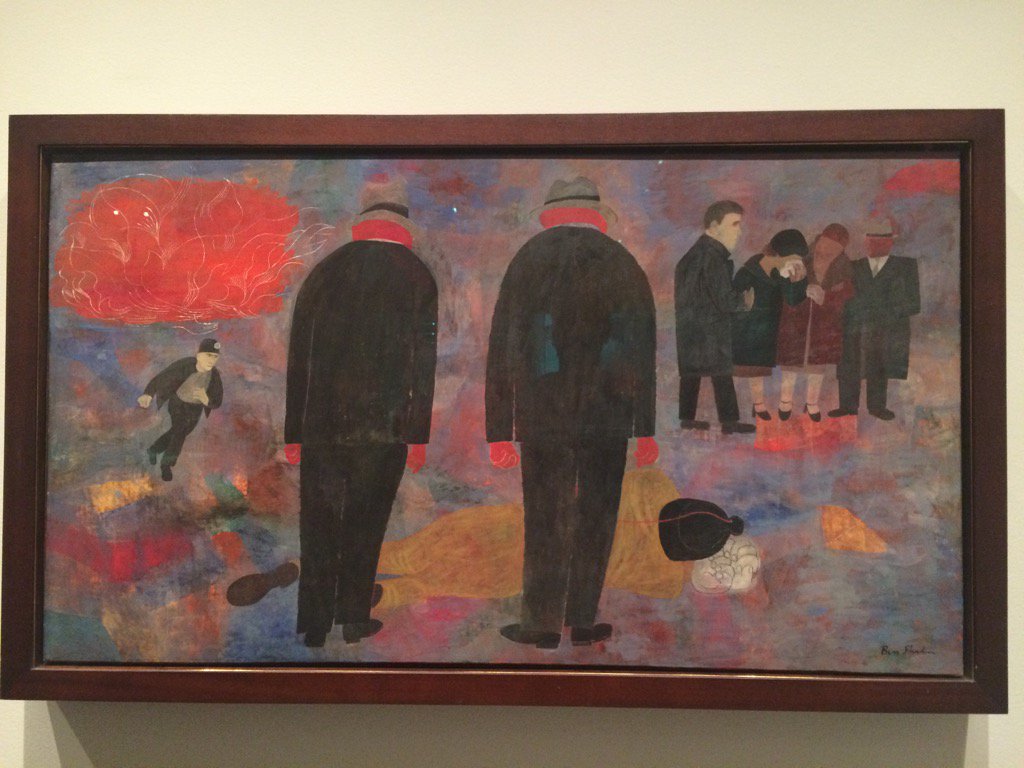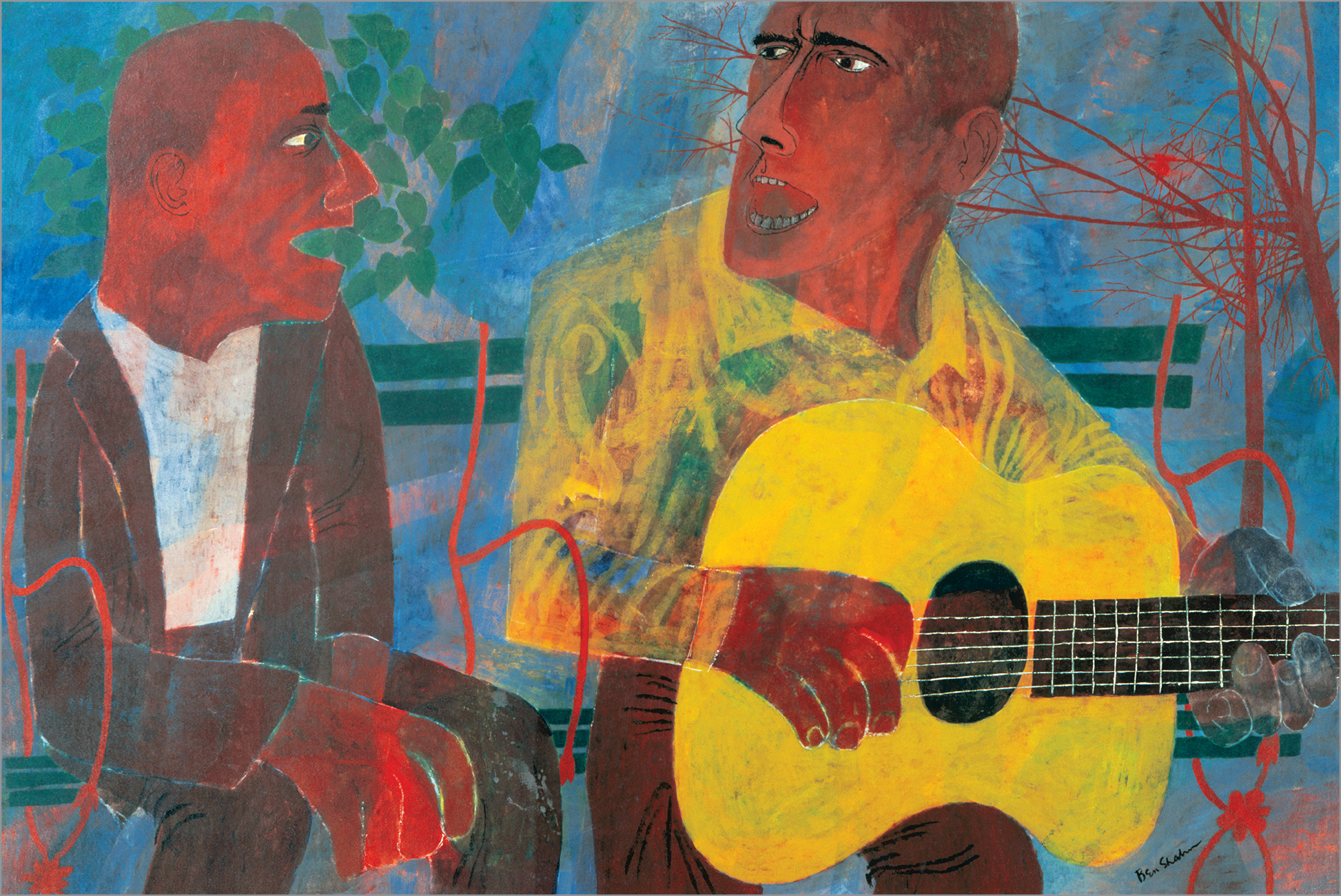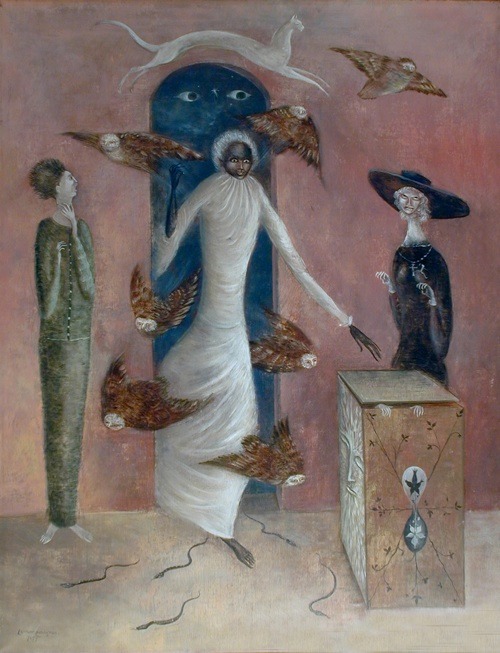Recently, I received a letter from an artist asking what art has influenced my work. It has become apparent to me that logging a collection of images and descriptions of artists I am interested in would be helpful for not only myself but for artists, curators, and supporters of my work.
Richard Lindner
For the past few months I have tried to make a habit of watching an episode of the Masterworks series by RM Arts (in co-production with WDR). These videos are available through Amazon, and included at no extra charge if you have an Amazon Prime account (1).
One artist's work whom I found rather interesting is named Richard Lindner (1),
Richard Lindner Couple 2
Victor Brauner
Victor Brauner Encounter of the 2 bis rue Perrel, 1946
Ilija Bašičević - Bosilj
Ilija Bašičević - Bosilj From The Apocalypse - Birds 1966
Ben Shahn
Ben Shahn Nearly Everybody Reads the Bulletin
I recently saw this painting in person while enjoying a trip to Philadelphia. It is a remarkable painting, unfortunately, this photo does not capture the details make this piece so inspiring. If you were to stand in front of this work, you would notice how beautifully he has rendered the print on the newspaper, the floral pattern on her shirt. I love that he is able to show off his skills in texture and pattern yet avoid a work that is overly cluttered. His ability to compartmentalize moments of detail, and develop a visual math that understands how to remove detail from some objects and place that energy elsewhere is something I greatly appreciate. It appears to me that Shahn has created his own sense of what a balanced picture is, for some it may seem kind of busy or awkward, but I find his works to be just enough information for me to use my imagination to fill in the less detailed forms, and took enjoy the manner in which he executes moments of detail work.
Peter and the Wolf, another Ben Shahn, I look forward to viewing one day in person.
Yesterday, I started reading the self titled book "Ben Shahn", in this book he notes a story from the old testament that had bothered him such a great deal, that after reading this book in school (he went to a school geared towards teaching Jewish culture) he refused to return to school for a week (2). Below is a summary of how early Ben Shahn developed a passion for justice, and I can see how this outlook on life plays an integral part in how he creates a sense of control and balance within the picture plane.
"I hate injustice," he told an interviewer in 1944. "I guess that's about the only thing that I really do hate. I've hated injustice ever since I read a story in school."
He repeated that story throughout his lifetime. It was a part of his Bible studies, and it concerned the building of Solomon's temple and the carrying of the Ark of the Covenant into that temple. According to the story, the Ark was to be brought in by two oxen; it rested precariously on a pole laced between them. The Lord warned that the pole would inevitably totter, but demanded that no one touch it since it was God's Ark, and He would take care of it. This was a test of faith. Of course, the Ark did totter, and one man did touch it, instinctively, in order to stop it from falling. Immediately, as he had been warned, the well-intentioned man was struck dead.
Young Ben, enraged, began to argue with his teacher. God was unjust, he insisted, and he refused to return to school until this injustice was officially admitted. After a week or ten days, and endless discussions between his teacher and his grandfather, Ben returned to school.
Leonora Carrington
Leonora Carrington, Took my way down II I took my way down, like a messenger, to the deep, 1977
Eugen Gabritschevsky
Eugen Gabritschevsky - le bestiaire fabulex
Other works I found interesting this month...
Gaugin, Pastorales Tahitiennes, 1893
Louis Robert Arthur Latapie (French, 1891-1972) Woman with cat Watercolor and ink on paper
Works Cited
1. www.amazon.com/Masterworks/dp/B01F7RVU4A
2. https://archive.nytimes.com/www.nytimes.com/books/first/g/greenfeld-shahn.html






